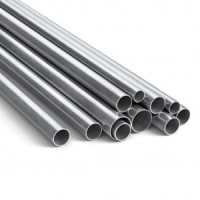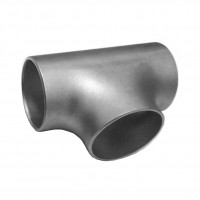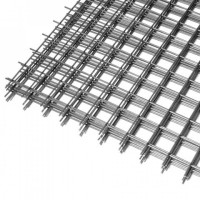Chernihiv seamless profile steel pipe 20x20-250x250mm st3, st20, seamless metal pipes GOST, cold-rolled and hot-rolled pipes, steel pipes
Seamless steel pipes are used in conditions requiring reliability and increased strength characteristics: in industrial and municipal pipeline systems with high pressure and temperature, for transporting liquid and gaseous media, as well as in construction as structural elements. Seamless steel pipes differ in the production method:
hot-worked;
cold-formed.
The initial stages of manufacturing hot-formed and cold-formed steel pipes are the same (obtaining a sleeve from a billet by extrusion or on a piercing mill). Then, blanks for cold-formed pipes are cooled before further processing (unlike hot-formed ones), and subsequent additional technological operations allow you to adjust individual parameters: increase heat resistance, mechanical strength, and surface treatment accuracy class.
Hot-formed seamless steel pipes for general purposes from carbon and alloy steels
Nominal dimensions, weight of one meter and accuracy class for maximum deviations for hot-formed steel pipes from carbon and alloy steels are established by the assortment GOCT 8732-78. The technical conditions of production are regulated by GOCT 8731-74, the requirements for marking, acceptance and logistics are determined by GOCT 10692-80.
Specifications according to GOCT 8731-74
Hot-formed pipes, depending on the performance requirements, are produced in five groups:
for pipes of group A, made of carbon steels according to GOCT-380, mechanical characteristics are normalized;
for pipes of group B from steels according to GOCT 380, 1050, 4543, 19281, the chemical composition is regulated;
for pipes of group C (steel according to the same GOCT as for class B), the chemical composition and mechanical characteristics are regulated;
for group G pipes made of steels according to GOCT 1050, 4543, 19281, the chemical composition is regulated and the control of mechanical characteristics is established;
group D - the value of the test hydraulic pressure is normalized, mechanical properties and chemical composition are not regulated.
Assortment, accuracy class and weight of hot-formed seamless pipes according to GOCT 8732-78
The GOCT 8732-78 range sets the following dimensional limits:
minimum outer diameter 20 mm, minimum wall thickness 1.08 mm;
maximum outer diameter 550 mm, maximum wall thickness 75 mm.
Seamless pipes are made of monolithic metal, the one-piece body has no seams or other connections. This increases resistance to pressure drops and aggressive media, increases resistance to tearing.
The main advantage of this category is tightness, in addition, all adverse factors associated with a welded joint are excluded: residual stresses, microscopic irregularities and sagging. Thick-walled and thin-walled tube-rolled products are produced using seamless technology: from 0.3 to 75 mm. To obtain equivalent strength indicators, a smaller amount of raw materials is required than in the production of longitudinal analogues, therefore, the weight of structures is reduced. Products with a large wall thickness have an increased margin of resistance to mechanical stress.
Seamless steel pipes are classified according to the production method:
Hot rolled;
Cold rolled;
Seamless.
Performance:
Increased resistance to internal and external loads;
Reduced metal consumption;
Resistance to corrosion due to the absence of microdefects inherent in welds;
Absolute exclusion of air pollution.
Excellent machinability in the manufacture of bent parts: bends, coils.
Despite the advantages, the application is not always appropriate. In utility networks, there are practically no loads that inexpensive electric welded products cannot withstand. Production costs are the main reason why widespread use is limited. So far, none of the applied technologies allows to produce products with a diameter of more than 550 mm. This is not always sufficient to meet the throughput requirements in trunk lines.
Safety precautions prohibit the use of tubular products with a solid body for the transport of explosive and flammable substances.
Types of seamless pipes
Hot rolled
Since production usually includes several operations, the technological process is organized using automatic lines. An ingot serves as a blank for hot-rolled products. The production cycle consists of the following stages:
Preheating of the billet in the ring furnace;
Firmware (piercing);
Rolling out the sleeve, the workpiece takes a cylindrical shape;
Run-in to pipe parameters;
Calibration, reduction (when a small wall thickness is needed);
Cooling;
stabilizedannealing.
Depending on the characteristics of the alloy, the ingot is heated to 1100-1250 C⁰. Immediately after annealing, the metal surface is covered with scale. If additional requirements are provided, semi-finished products are cleaned in an acid solution, ground and coated. Specifications are reflected in the GOST 32528-2013 regulation, and the assortment in GOST 8232-78 (in addition, the old standard GOST 8734-75 with clarifications applies).
During hot working, the structure of the metal retains ductility and impact strength; during operation, such a pipeline dampens vibrations and withstands a significant weight of the soil.
cold worked
Cold-formed pipe rolling is more difficult to manufacture. Steel without heating is processed more slowly, rolling cycles alternate with stabilizing heat treatment, cleaning, drying in a special chamber, and applying lubricants.
The workpiece is a centered cylindrical shape (sleeve). For rolling, three-roll mills are most often used. The rolls are placed with a slope, the parameters of the future product depend on the angle. The tensile strength of the alloy is taken into account, at which further deformation is impossible without ruptures. Despite the fact that the technology is called cold, steel is heated to significant temperatures from friction.
During cold deformation, the metal structure is stretched in the direction of application of forces, during heat treatment recrystallization occurs, the grains are crushed and the structure becomes homogeneous again. Thus, the strength is laid at the molecular level, while the number of repeating cycles can reach 17. Technical conditions are regulated by the GOST P 54159-2010 regulation, the sizes are given in GOST 8734-75.
An additional classification according to wall thickness is applied to the cold-formed assortment:
Particularly thin-walled - up to 0.5 mm;
Thin-walled - up to 1.5 m
Thick-walled - the ratio of the outer diameter to the wall thickness is not more than 6;
Particularly thick-walled - the ratio of the outer diameter to the wall thickness from 6 to 12.5.
The cold method produces pipes of low weight and high precision, including capillary tubes. Finished semi-finished products are used for the installation of pipeline systems, circuits of heat exchange equipment, the manufacture of coils and various parts.
Seamless
Seamless pipes are often confused with other seamless products, but they cannot be classified as hot-rolled or cold-rolled. Special ingots are heated and pulled through the mill; rolling machines are not used. Products are characterized by low thermal elongation, they are used for steam supply, aviation, nuclear industry and other highly specialized areas. Given the specific purpose, corrosion-resistant coatings are immediately provided for carbon steels.
Applications
The main function of a seamless pipe is the transportation of pressurized media or work with highly hazardous substances, when leaks or ruptures can threaten people's safety or harm the environment. Each type has its own advantages and technical parameters.
The technology for the production of hot-rolled steel is the simplest, metal products are universal and are used in all industries.
In urban engineering networks: thick-walled products withstand soil loads, reduce heat loss;
Transfer of hot media for any purpose;
Transportation of gas, oil, organization of technological and field pipelines;
As piles, pillars, supporting elements, casing pipes;
For the manufacture of tees, bends for pipeline systems;
Details of aggregates, boiler installations, automobiles.
A profile pipe is one of the types of modern building rolled metal, obtained by profiling.
In the general case, profile pipes are called pipes with a cross section other than round. Oval, as well as square and rectangular pipes are produced, with the latter two types being the most common. The main material is carbon and low alloy steel (typically St3SP or 09G2S). There are also profile pipes made of stainless steels.
A profile pipe is produced by hot or cold deformation of an electric-welded straight-seam round pipe. That is, first, a round pipe of the calculated section is bent and welded from a billet (strip), then the round pipe enters the molding, where it is given the desired section with special rolls. After that, all pipes, according to GOST, undergo non-destructive testing of the weld and are additionally treated thermally to relieve internal mechanical stresses.
No questions about this product, be the first and ask your question.






